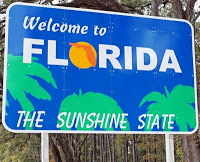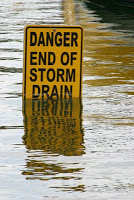Tag Archive: driver safety

The Best And Worst Cities For Driving In Florida
September 13, 2011
Allstate Insurance Company released their annual report on the best and worst cities in which to drive. The study looked at Allstate collision claims and compared them to the national average and ranked the nation’s cities by population. To prevent any type of special event such as floods and hurricanes from skewing the results, the Allstate actuaries analyzed figures over a two year period to reach their results.
The list shows a driver’s likelihood to be involved in a collision and the average number of years a driver in that city can expect to go between collisions. Based on their results:
The top five safest cities in Florida for drivers, in terms of ranking, are:
1. Port Saint Lucie – A driver in Port Saint Lucie can expect to go 11.2 years between collisions and the chances for being involved in a collision are 10.4 percent less than the national average. Port Saint Lucie was ranked number 24 overall in the national list of safest cities in America.
2. Cape Coral – A driver in Cape Coral can expect to go 10.5 years between collisions and the chances for being involved in a collision are 4.8 percent less than the national average. Cape Coral was ranked number 42 overall in the national list of safest cities in America.
3. Tallahassee – A driver in Tallahassee can expect to go 9.8 years between collisions and the chances for being involved in a collision are 1.9 percent more than the national average. Tallahassee was ranked number 66 overall in the national list of safest cities in America.
4. Jacksonville – A driver in Jacksonville can expect to go 9.7 years between collisions and the chances for being involved in a collision are 3.1 percent more than the national average. Jacksonville was ranked number 73 overall in the national list of safest cities in America.
5. St. Petersburg – A driver in St. Petersburg can expect to go 9.7 years between collisions and the chances for being involved in a collision are 3.3 percent more than the national average. St. Petersburg was ranked number 74 overall in the national list of safest cities in America.
The top five most dangerous cities in Florida for drivers, in terms of ranking, are:
1. Hialeah – A driver in Hialeah can expect only 6.6 years between collisions and the chances for being involved in a collision are 52.5 percent more than the national average. Hialeah was ranked number 183 overall in the national list of safest cities in America.
2. Miami – A driver in Miami can expect only 7.0 years between collisions and the chances for being involved in a collision are 43.1 percent more than the national average. Miami was ranked number 178 overall in the national list of safest cities in America.
3. Tampa – A driver in Tampa can expect only 7.1 years between collisions and the chances for being involved in a collision are 41.7 percent more than the national average. Tampa was ranked number 176 overall in the national list of safest cities in America.
4. Hollywood – A driver in Hollywood can expect only 7.8 years between collisions and the chances for being involved in a collision are 28.2 percent more than the national average. Hollywood was ranked number 154 overall in the national list of safest cities in America.
5. Orlando – A driver in Orlando can expect only 8.0 years between collisions and the chances for being involved in a collision are 25.5 percent more than the national average. Orlando was ranked number 149 overall in the national list of safest cities in America.
The complete Allstate report can be seen at: http://allstatenewsroom.com/releases/00c90674-c797-4dd0-82c8-3813ccbe1e1e:en-US/download/e3fc06ab-a016-4248-89ef-72454729bd0a

Cars and Waterways
June 28, 2011
Although Florida is known to have many canals, lakes, pools and waterways, many recreational communities in all states have these types of waterways also, and with summer these areas will soon be busy with many visitors.
Could your car end up in the water because of a mistake, like hitting the gas instead of the brake, or being involved in a crash and suddenly you are pushed into a situation that you didn’t expect. Sometimes flooded areas can merge together with a canal or river or lake. What do you do if you find yourself in your car that went into the water?
The answer of course is “Be Prepared”. Have a Plan. There are several acronyms that might help you remember and that can apply to such situations.
The SOS-GO is one emergency reminder.
S – Stay calm
Evaluate your situation quickly. Realize that there may be pressure against the doors and they cannot open immediately.
O – Open the Window
You can roll down the window and leave the vehicle. If you have power windows it may be more difficult. Sometimes the window will work for a few minutes or they could stop working as soon as you hit the water. If that becomes the case, you should have something available to break the window. There are commercial tools available on-line, in dealerships or in auto supply stores. There is the window punch which can be on a key chain or the life-hammer which is mounted in the car somewhere near the driver.
S – Seatbelt must be disengaged.
If you cannot unclip your seatbelt, the life hammer usually has a way to cut the belt.
GO – Get Out
It is most important to leave your vehicle as quickly as possible.
The other acronym that is sometimes used as a reminder is POGO.
P – Pop your belt.
This tells you first to open your seatbelt. If you cannot get it off, cut it with your tool.
O – Open your door.
If the door cannot open, break the window.
GO – Get Out.
Again, the most important thing to remember is that you cannot stay in the vehicle to wait for help.
Some suggestions for surviving a sinking car include being calm and working quickly to get out. Most vehicles will float for only a minute or two before they begin to submerge.
5 steps to safety include:
- Unclip your seat belt or cut it.
- Roll down your window quickly or break it.
- If you cannot get the window to open, look for another means of escape like the rear window or sunroof.
- If there is no other way to get out, try to open the door. The door may be very heavy, make sure it is unlocked.
- If the door will not open, try to be calm, wait until the inside of the car is almost filled with water. Take a deep breath and keep trying to get the door to open. When the pressure is equal the door will open.
The most important things to remember is that you must find a way to GET OUT.

National Drivers Test Highlights
June 17, 2011
Every year, GMAC Insurance offer up a National Drivers Test available for all, regardless of age or state, in order to get a better insight on how motorists are driving around the country. This test usually yields interesting results, such as which is the state with the most capable drivers, or which age group is best at driving performance on the road.
According to the test, these are the top 10 states when it comes to knowledgeable drivers:
1. Kansas
2. Iowa
3. Colorado
4. Minnesota
5. Oregon
6. Nebraska
7. Indiana
8. Missouri
9. South Dakota
10. Wyoming
They have also found that:
- 1 in 4 women failed the test (27.2 percent versus 13.6 percent for male).
- The Northeast is the worst driving region, while the Midwest is the best, based on test scores.
- The elderly succeed. Out of all the test takers, those that belong in the oldest group, aged 60-65 have the highest scores.
- New York and Washington: 1 out of 3 of all drivers in both states failed the test. Be careful on these roads. While New York did move a couple of notches from the bottom of the test results last year, it’s still valid to point out that a majority of NY drivers are getting something wrong on the test.
Do you think this data accurately represents reality? Now in its 7th year, the GMAC Insurance National Drivers Test point out that drivers have improved all over the nation in the last year, but it still tells a sad reality that a large number of people still lack basic driving knowledge. 85 percent were unable to point out the proper course of action when faced with a yellow light, while only a quarter of all test takers were aware of safe following distances.
There’s a lot to be said about the validity and accuracy of tests like these, but there’s more to be said about the results that we’re getting. Law enforcement and driving advocacy groups should see options such as driver’s education in schools and other such initiatives to make sure that year after year, points only go up — along with that, the percentage of safety on the road.

Driver’s Ed is Not a One Shot Deal
September 1, 2010
Working in the driver safety field for over a decade, I find myself giving parents both solicited and unsolicited advice. I am passionate about teen driver safety, not only because I was a teenage driver at one time and made irrevocable mistakes along with many of my friends, but also because I am a parent who is concerned about my own teen drivers and their friends on the road.
Driver ed is not a one time deal. From the ages of 14 to 19, parents need to approach driver training as driver continuing education. Aspects of continuing education include: safety awareness, prevention education, introductory teaching, skill development, intermediate education, additional driving exposure and defensive driving education. The Governor’s Highway Safety Administration (GHSA) and many individual states are aware of the importance of continuing driver education. As parents, it is time that we change our attitudes and recognize the value this type of training provides.
By the time a soon-to-be driver is 14, they realize that it won’t be long before they are behind the wheel. They become more aware of how you, your family members and other adults they travel with drive on the roads. They notice when you speed, try to multi-task, weave in and out of traffic, try to beat the red light and fuss about other drivers.
From this point, driver training has begun. If you haven’t already started being a positive role model, the time has come to do so. This is a good time to:
- Brush up on the state’s driving manual
- Discuss the precautions you take when deciding what time to leave, routes to go and lanes to travel in and how those precautions change based on circumstances
- Discuss current driving related articles in the news and prevention strategies
Prior to applying for your learner’s permit, Florida law requires completion of the Drug and Alcohol Class, which is a 4 hour course that focuses on prevention. Two-thirds of the curriculum generally addresses the dangers of drugs and alcohol and how deadly they become when combined with driving. The remainder of the curriculum addresses:
- Following distances
- Stopping distances
- Special vehicles
- Different aspects of the driving environment
It can be done in a classroom setting with an instructor or online at their leisure.
At this point, your teen hasn’t even started the vehicle and quite a bit of education has already begun. This is a great time to create a Parent-Teen Driving Contract, which will establish the boundaries, responsibilities and privileges of driving during their teen years. Also keep a driving log; to keep track of the amount, type and time of day that driver training was conducted.
Once the new driver has passed the road signs, regulations and eye tests, they will be issued a Learners Permit from the Division of Motor Vehicles. As a parent, you can now begin some introductory teaching:
- Show them the equipment, gauges and their functions on the interior and exterior of the vehicle.
- Begin very simple skill development regarding pre-trip inspections, starting, stopping and parking.
The next step is to move into intermediate education and intermediate skills. You may want your teen to take a driver’s education class or practice with an instructor. If you plan to take on the instruction yourself, it should be during this stage that you dedicate time (most states require 50 hours supervised) exposing them to highways, specific weather conditions and driver safety practices such as how to properly use the vehicle mirrors.
Practicing these intermediate driving skills help the new driver develop an adequate understanding of the vehicle and the skills to maneuver it with confidence. This is the time to discuss what it means to be a safe driver. Some topics to consider:
- What type of driving behaviors do safe drivers demonstrate?
- What type of attitudes do other drivers bring behind the wheel?
- How should a safe driver respond to harried, angry, or inattentive drivers?
- How important is being rested to making safe driving decisions?
As you move into the next stage of driving, your teen driver should demonstrate control of the vehicle. You should feel confident in their judgment and how they handle most driving situations. Focus on refining their skills by exposing them to complicated driving scenarios and employing defensive driving strategies such as:
- How to handle multiple hazards
- Identifying hazards with the greatest priority
- Which escape routes are available
- Complex right of way situations
Walk through vehicle emergencies, not only handling their vehicle, but also how to respond to another vehicle experiencing an emergency such as a blown tire.
Enroll your teen in a defensive driving class either right before they get their license or soon afterwards. While they may know how to drive, they haven’t been ready to fully understand defensive driving techniques for themselves. Don’t wait until something happens that requires them to take a class.
Because teenage drivers are most at risk of a crash during their first year of licensure, there are supplemental classes they can take. Some courses are only one hour and include topics such as:
During that first year, it is important to phase in how much access to the vehicle they have, the time and under what conditions they drive, and the number of passengers, if any allowed.
Driving is such an important step in a teen’s development, but it can also be very dangerous. It is up to the parents to establish and enforce a strong graduated licensing system. Remember that driver education is ongoing over the teenage years.
Driver education is continuing education.
Dori Slosberg Foundation Programs That are Saving Lives on our Highways
July 15, 2010
The Dori Slosberg Foundation is a private non-profit public service organization dedicated to traffic safety. It is named after the daughter of State Representative Irv Slosberg, Dori Slosberg, who at 14 was killed, along with four others in a car crash while their seat belts were unbuckled.
The foundation’s mission is to further educate the public about the importance of traffic safety while promoting safe driving habits and helping Florida law enforcement to ensure a risk-free driving environment on roadways. They also support nationwide programs that enable law makers to save lives through legislation. An example of this is the development of the Dori Slosberg and Katie Marchetti Safety Belt Law, which increases the effectiveness of safety belt law enforcement.
Since it was established in 2004, the Dori Slosberg Foundation has developed with several programs and initiatives to provide information on traffic safety including:
Staying Alive on 95, 75 & Florida’s Roadways
Focused on keeping Interstate 95, Interstate 75 and Florida’s roadways as safe for driving as possible, this program brings together concerned individuals and law enforcement to work on innovative ways to keep Florida’s major roadways safer.
DUI 0 Tolerance
This annual brings DUI law enforcement and relatives of DUI victims together, providing an outlet to tell their stories of loss, and reiterating a no-tolerance policy for DUI offenders.
Driver’s Education & Safe Teen Driving Programs
The foundation has set out to form assemblies across the state of Florida which reinforces the value that driving safety begins with proper driver education, before teens even obtain their licenses. They hold conferences for teachers and instructors to create awareness of current resources and technology available for them and to ensure students are getting the quality driver education they deserve. They also reinforce the idea that, before teens get their licenses, they should know about seat belt safety and the dangers of distracted driving.
Safe Senior Transportation
The foundation has been working to find ways to give alternative means of safe transportation for those who are unable to drive due to age or disability. They also provide a one-stop shop for getting elder drivers license renewal and assessment of their driving skills. They also hold a forum for giving safety tips for senior drivers.
Through committed passion and constant attention, these programs and the support of the public have turned the Dori Slosberg Foundation into an influential force when it comes to traffic safety.
